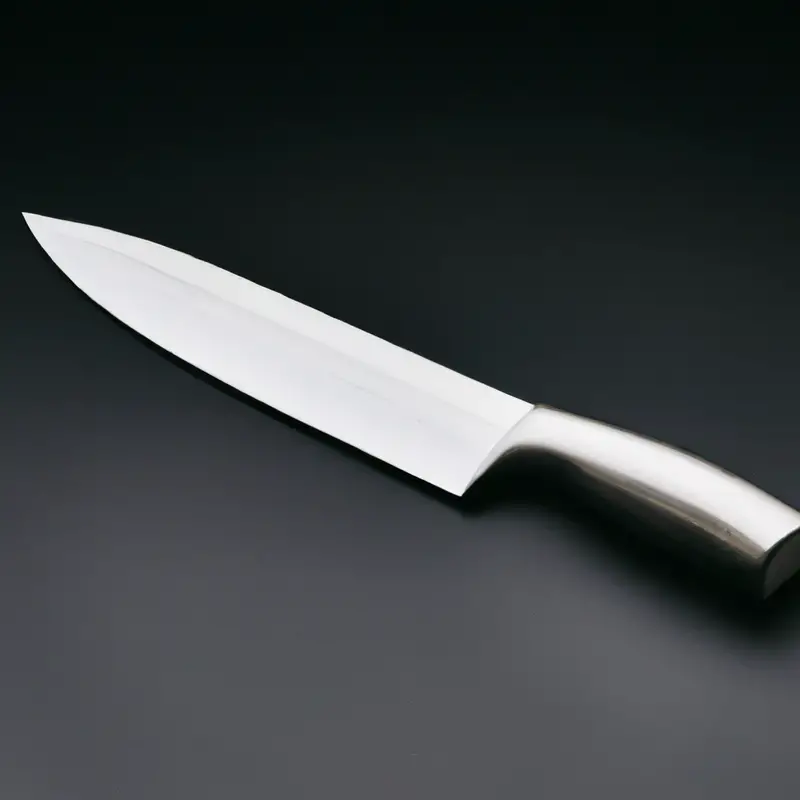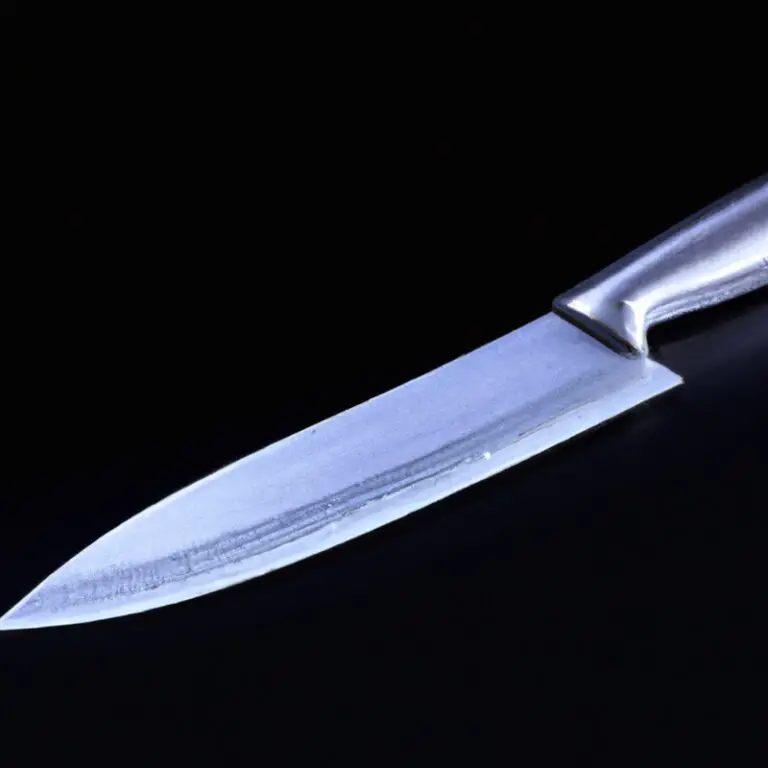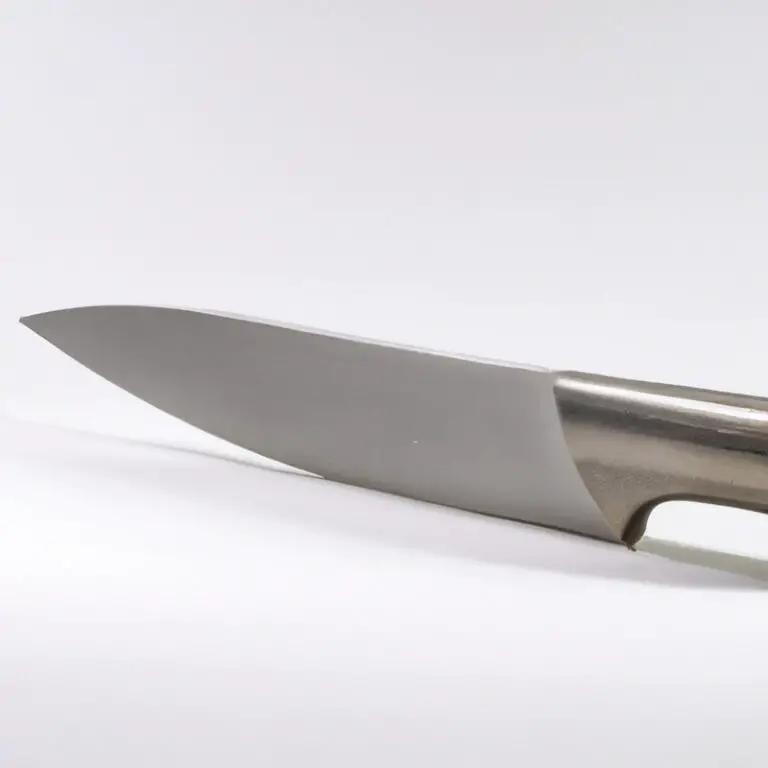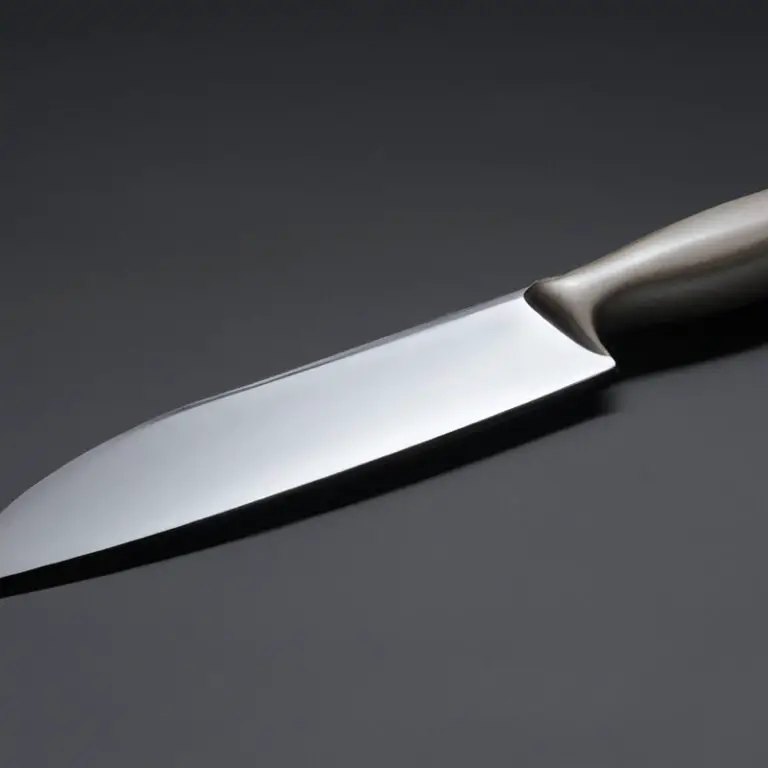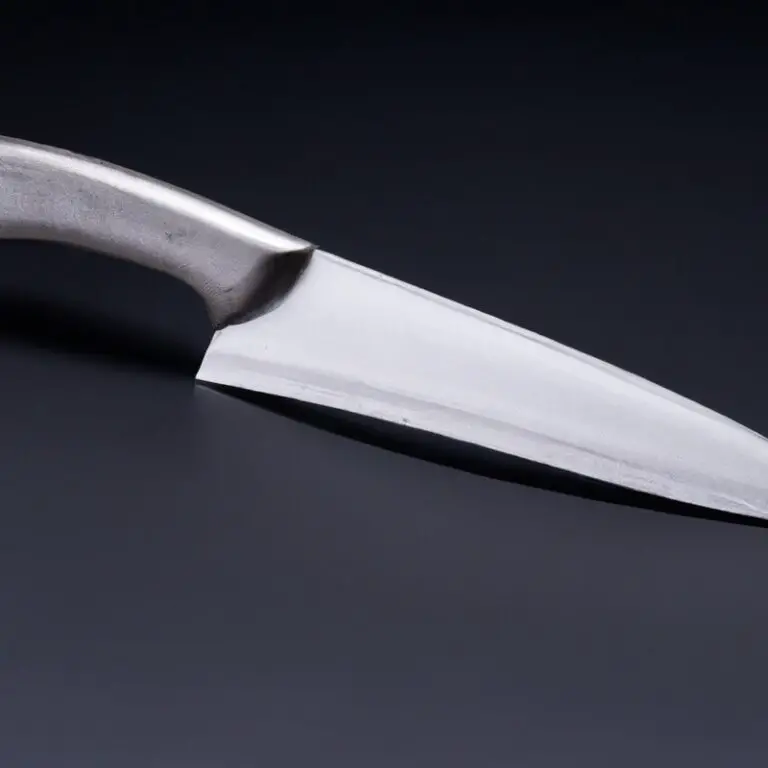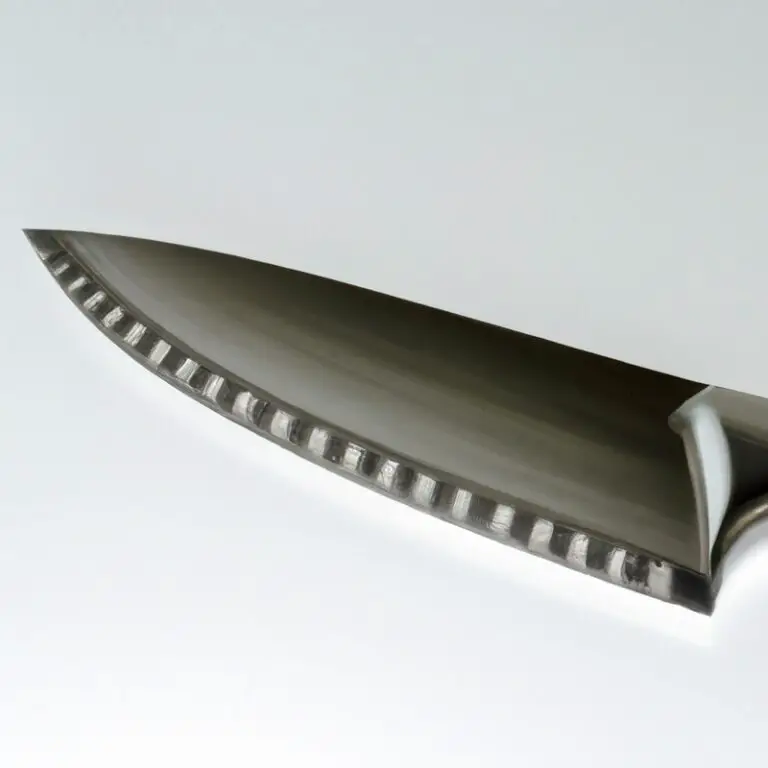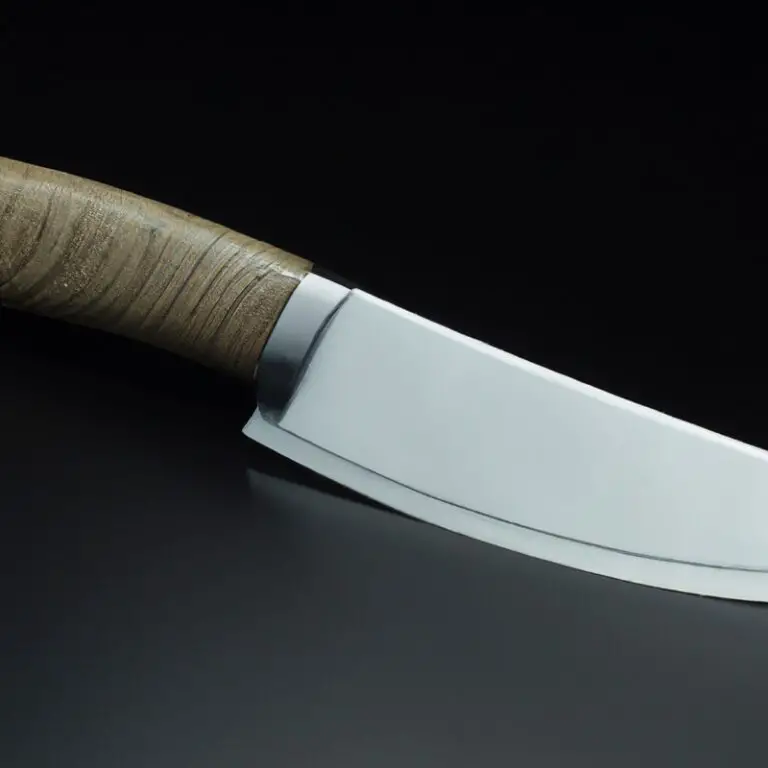How To Dice Onions With a Santoku Knife? Easy!
Key Takeaways:
- A Santoku knife is a versatile tool for dicing onions, providing precision and control for consistent cuts.
- Start by cutting the onion in half, removing the skin, and making a series of vertical and horizontal cuts without cutting through the root end.
- Proper technique and hand placement are crucial to preventing injury and achieving efficient dicing.
- Practice and patience are key to mastering the art of dicing onions with a Santoku knife.
Are you tired of crying your eyes out every time you dice onions? Look no further! The Santoku knife can make dicing onions a breeze.
As a professional chef with years of experience using Santoku knives, I’ll guide you through the essential prep work, hand placement, and proper technique for efficient dicing.
Join me as I share my secrets to creating consistent and uniform diced onions with minimal risk of accidents. Plus, I’ll show you how to care for your Santoku knife properly after dicing onions.
Get ready to elevate your onion-dicing game!
| Step | Description |
| 1 | Wash and peel the onion. |
| 2 | Cut off the top and bottom of the onion so it can lay flat. |
| 3 | Slice the onion in half from top to bottom. |
| 4 | Place one half of the onion flat-side down on the cutting board. |
| 5 | Slice the onion horizontally towards the root end, leaving the root intact to hold the slices together. |
| 6 | Make vertical slices in the onion while holding it together with the root end. |
| 7 | Repeat steps 4-6 with the other half of the onion. |
Understanding the anatomy of a Santoku knife for dicing onions
The Santoku knife is a popular Japanese knife that features a wide, flat blade with a slight curve leading towards the pointed tip. This unique design allows for efficient slicing, dicing, and chopping of fruits, vegetables, and meats.
Understanding the anatomy of a Santoku knife is essential when dicing onions as it determines the level of control and precision you can achieve.
The blade’s height and weight enable the chef to rock the knife back and forth to produce a chopping motion, while the sharp edge ensures clean cuts. The blade’s balance between the handle and blade enables the chef to have better control over the knife, preventing any accidents.
Overall, the Santoku knife is well-suited for dicing onions as it allows for a more comfortable and efficient cutting process.
Essential prep work before dicing onions with a Santoku knife
Before dicing onions with a Santoku knife, it is essential to prepare the onion properly. Start by removing the skin and cutting off the root end of the onion.
Next, cut the onion in half from top to bottom and make a shallow cut into the onion, following the natural curve, to create a guideline for dicing.
Finally, make vertical cuts down the onion, perpendicular to the cutting board, and then make horizontal cuts across the onion, using the guideline you created earlier. This will result in uniformly diced onions for your recipe.
Taking the time to properly prep the onion will make dicing with a Santoku knife easier and more efficient.
How to hold a Santoku knife correctly for efficient dicing
To hold a Santoku knife correctly for efficient dicing, start with a firm grip on the handle using your dominant hand. Position your index finger and thumb on either side of the blade’s base, and rest the other three fingers on the handle.
Make sure your hand is positioned high on the handle for better control.
When dicing, keep the blade perpendicular to the cutting board and use a rocking motion to slice through the onion. Always keep your fingers and thumb tucked safely away from the blade to avoid accidents.
By holding the Santoku knife properly, you can dice onions more efficiently and create consistent, uniform pieces.
Proper hand placement for superior knife control when dicing onions
Proper hand placement is crucial for superior knife control when dicing onions with a Santoku knife. Begin by firmly gripping the knife handle with your dominant hand, keeping your palm wrapped around the handle while your fingers curl upward.
Your other hand should hold the onion, keeping your fingers curled inward and your knuckles pressed against the blade to prevent any accidental cuts.
Ensure your fingers rest above the blade, along the top edge of the onion, stabilizing it while you make your cuts. With a secure grip on both the knife and onion, you can confidently begin dicing onions with your Santoku knife.
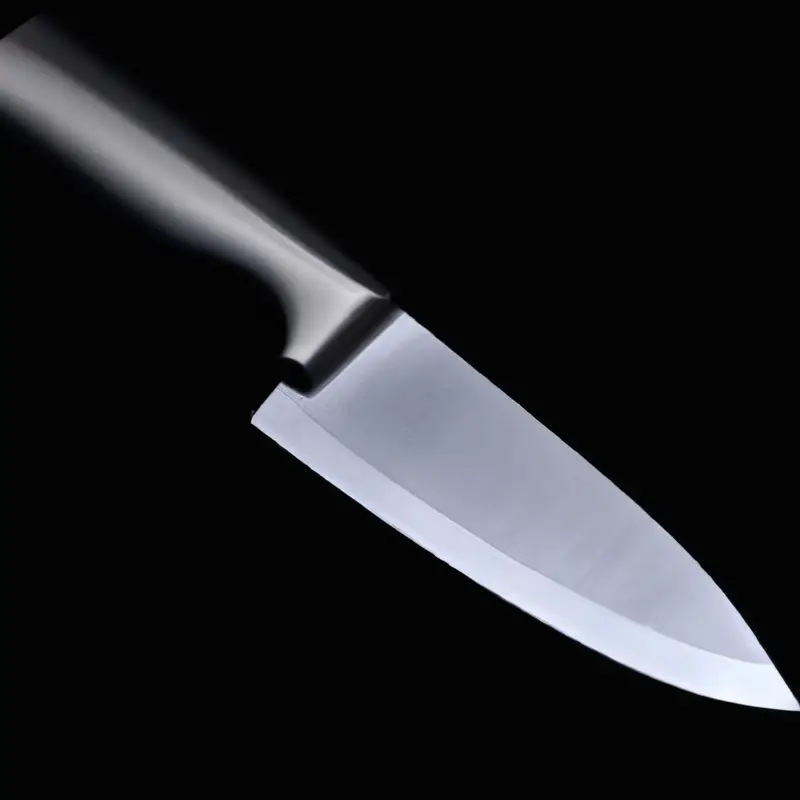
Techniques for creating consistent onion dice with a Santoku knife
When it comes to creating consistent onion dice with a Santoku knife, there are a few techniques to keep in mind. First, ensure that your onion is cut in half and the ends are removed before cutting into small pieces.
Next, use a detailed grip on your Santoku knife with your fingers curled around the handle and your thumb rested on the flat side of the blade.
This grip provides excellent knife control for precise cuts. When making cuts, use a slight rocking motion and keep the tip of the knife on the cutting board as you slice through the onion.
This helps to create consistent cuts and lessens the chance of injury.
Another technique for uniform diced onions is the 45-degree angle method. Slice your onion in half, then make horizontal cuts 45 degrees diagonally downward, followed by vertical cuts.
Finally, make horizontal cuts across the onion.
By using these techniques and practicing regularly, you’ll soon have perfect, consistent onion dice every time you use your Santoku knife.
Tips for reducing the risk of accidents when dicing onions with a Santoku knife
When it comes to reducing the risk of accidents when dicing onions with a Santoku knife, there are a few important tips to keep in mind. Firstly, always make sure that your knife is sharp.
A dull blade is more likely to slip, leading to potential injuries.
Secondly, use a cutting board that is stable and secure, with a non-slip surface, to prevent the board from sliding around while you work. This will help to keep your fingers out of harm’s way.
Thirdly, keep your fingers curled under and away from the blade as you chop.
Slowly move your fingers back as you chop, but never let them trail behind the blade. Lastly, don’t rush.
Take your time and focus on your technique.
Remember, accidents happen when you’re distracted or in a hurry. By taking a little extra time and care, you can significantly reduce the risk of accidents when dicing onions with a Santoku knife.
Mastering the rocking motion for efficient dicing with a Santoku knife
Mastering the rocking motion is crucial to efficient dicing with a Santoku knife. The rocking motion involves maintaining a steady rhythm as you glide the knife back and forth while keeping the tip on the cutting board.
Use the heel of the blade to chop the onion, then rock the blade back to slice through the vegetable.
Repeat this until you achieve the desired dice size. Practice the rocking motion with a steady grip and proper placement of your fingers and thumb on the blade.
With time, you’ll find it more natural to dice onions with a Santoku knife.
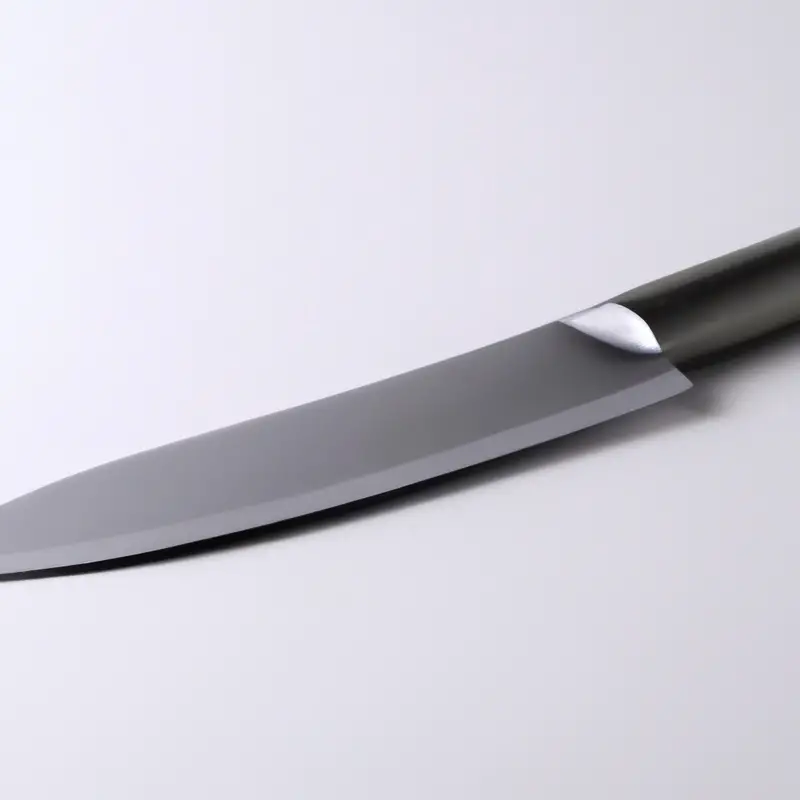
The 45-degree technique: A method for creating uniform diced onions
The 45-degree technique is a popular method for achieving uniformly diced onions with a Santoku knife. To execute this technique, start by halving the onion and making two vertical cuts, being careful not to cut through the root end.
Next, make horizontal cuts perpendicular to the vertical ones, again being careful not to cut through the root.
Finally, make angled cuts at a 45-degree angle, creating evenly sized diced onions. The 45-degree technique can take some practice to master, but with patience and persistence, it can help improve your onion dicing skills significantly.
Advanced Santoku knife techniques for a professional-level dice
To achieve a professional-level dice when preparing onions with a Santoku knife, utilizing advanced techniques is crucial. One such method is the Push Cut, where the knife’s tip is kept in contact with the cutting board while the rest of the blade moves up and down in a chopping motion.
This technique is ideal for creating precise and uniform cuts.
Another advanced technique is the Tap Chop, where the blade is used in a similar motion to the Push Cut, but the tip is repeatedly lifted and tapped on the cutting board to avoid crushing the onion while slicing. This technique requires practice, but it can result in perfectly sliced onions with ease.
Lastly, the Draw Cut is another advanced technique to consider, where the motion goes away from the body, unlike the Push and Tap Chops that move towards the body.
This technique can be used to slice onions quickly and efficiently but requires careful attention to hand placement and blade control to avoid accidents. Incorporating these advanced techniques into your dicing routine with a Santoku knife will undoubtedly elevate your cooking game and bring a professional-level dice to the table.
How to properly clean and care for your Santoku knife after dicing onions
After dicing onions with a Santoku knife, it is important to clean and care for the knife properly to ensure its longevity and efficiency. First, wipe the blade with a paper towel or damp cloth to remove excess onion residue.
Then wash the blade with warm, soapy water and dry it thoroughly with a clean towel.
Avoid using abrasive scrubbers or harsh dish soap as they can damage the blade. Store the knife in a dry, safe place, preferably a knife block or on a magnetic rack.
Regularly sharpen the blade with a honing rod or sharpening stone to maintain its sharpness.
By following these steps, your Santoku knife will remain in excellent condition for all your future onion dicing needs.
Final Verdict
Dicing onions with a Santoku knife can be a safe, efficient, and enjoyable experience when equipped with the right knowledge and techniques. We have explored the anatomy of the knife, essential prep work, proper hand placement, and advanced techniques to achieve a professional-level dice.
By following the tips and guidelines presented in this article, you can increase your confidence and accuracy when working with onions and improve your overall culinary skills.
Remember, a well-maintained Santoku knife is a valuable investment in your kitchen that will bring years of reliable performance and satisfaction. Thank you for reading, and happy dicing!

